By Jeffrey A. Rendall; Images courtesy of TaylorMade Golf
CARLSBAD, CA – “It’s very stable and very resistant to twisting -- so on mishits, you’re going to see a very consistent roll. If you miss it out on the toe or the heel, the head resists twisting and protects ball speed.”
Those are the words of Frank Firman, Category Manager of Putters and Wedges for TaylorMade Golf. Firman was specifically referencing the company’s counterbalanced Ghost Spider SI putter, but said the same thinking goes into all their latest creations.
“With putters, we focus on high MOI (Moment of Inertia), very stable putters. That’s the direction we’ve headed towards in the last two or three years with some of the Spiders, and then last year we launched a Spider Blade and Spider Mallet, which respectively are very stable putters in those two categories.”
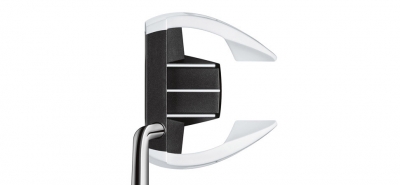 |
Stability is a good thing, especially in the world of putters. The last thing you want on the green is something going wobbly – at least where golf clubs are concerned.
Simply put, a stable putter will get the ball to the hole more often than a less stable flat-stick. What’s the old saying about short putts not going in the hole?
To that end, TaylorMade’s Daddy Long Legs putter is over 8500 MOI, the most stable on the market. The Ghost Spider was the previous highest with 6800 MOI.
That’s a lot of innovation for a company primarily known for generating shots that go a great distance, not short ones. Firman admits TaylorMade will keep its reputation as a metalwoods-intensive manufacturer, but that doesn’t mean they can’t make great short game tools in addition.
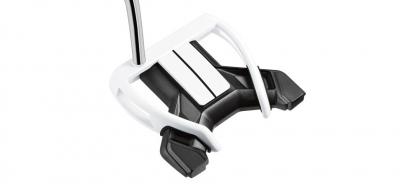 |
| Daddy Long Legs. |
We tried the new Ghost Spider SI model, which has a very unique shape – something that really grabs attention on the putting green. But besides the strange looks, it’s got technological “stuff” inside to help you make putts.
“The Ghost Spider SI putter is very similar to Daddy Long Legs, Spider Blade and Spider Mallet – this is the most recent launch of our counterbalanced, stable, Spider. It’s a putter that has over 6000 MOI – so again, very resistant to twisting. And it’s in a unique shape, but a shape that better players on Tour were asking for, in addition to better players at retail,” Firman explained.
It’s all about the shapes. TaylorMade offers traditional-looking blades, standard mallets and then the “spaceship” designs like the Daddy Long Legs. The Spider SI is somewhere in between.
Firman mentioned counterbalancing, which is the latest and hottest trend in putter design. Counterbalanced putters put weight in the grip end of the putter – which again, promotes stability.
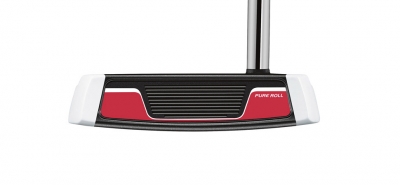 |
“The analogy I like to give is, if you think about a guy doing a bench press, you wouldn't put the weight in the middle for obvious reasons – or on one end for obvious reasons, because it becomes less stable. So, you put the weights out on the perimeter, and it becomes very resistant to twisting,” Firman said.
Counterbalancing takes the stability that’s already promoted in the head and spreads it throughout the entire putter. Adding weight to the butt end of the grip makes the putter 50-60% more stable than a traditional style putter with a lighter, smaller grip.
Is there magic in counterbalancing? No. It’s not a cure for pulls, pushes or the yips. But stability helps make those ailments less severe.
“It’s a putter that’s more stable, so if you pull or push, or whatever your tendency to do is normally, I would say this is going to get you back to square more often,” Firman suggested.
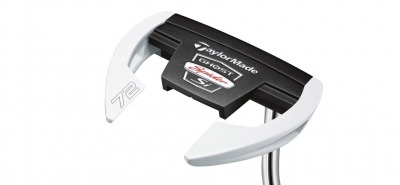 |
“It’ll help with the yips for sure, because your hands are typically quieter throughout the stroke. And then with distance control, you’re definitely going to see more consistent distance because your stroke is more stable and consistent.”
The grip itself is probably bigger than you’re used to – and a counterbalanced putter is longer than “standard.” Whereas we usually employ a 35” putter, our Ghost Spider SI is 37” (but you hold it a couple inches down on the grip, with your hands positioned as they would be on a regular length grip).
Firman says the bigger grip isn’t an anti-yip device – it’s there simply because it’s heavier and provides the weight to counterbalance the head. TaylorMade is working on grips that are smaller in diameter and would still provide the benefits of counterbalance. So if you don’t like the big grip, you might have an option real soon.
A fitting session with a professional could help determine whether counterbalancing is right for you. It may not be as technical as it would be with irons and woods, but there’s still much to discover about how you putt.
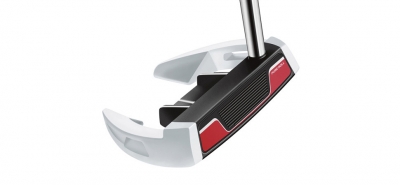 |
“I don’t know if there’s a right way or a wrong way to fit putters,” Firman surmised. “You want to get the lie angle and the loft correct. Other than that, a lot of it is personal preference. People have different types of strokes. You may have more of what we call an open door/closed door type of stroke, where you’re opening the blade and closing the blade through the stroke. Others have a straight back, straight through stroke, which typically does not open and close.”
“Different types of putters work better for different types of strokes. If you get a face-balanced putter, for example, it might work better for a straight back, straight through stroke. If you use a putter that has toe hang, in most cases it’s better for a guy who has an open door/close door type of stroke.”
Fitting aside, a big part of the counterbalance putter revolution has to do with the USGA 14-1B ruling that bans anchored putters starting in 2016. Players who use belly putters are looking for a solution, and the big grip, longer shafted counterbalanced putters are offering a more attractive alternative than “regular” putters.
Firman says counterbalancing appeals to non-anchored players as well, to the point where 50% of TaylorMade’s putter sales are now counterbalanced models. Considering that they only introduced their first counterbalanced putter a little over a year ago, that’s a significant gain.
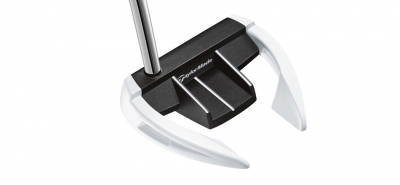 |
The Ghost Spider SI was our first counterbalanced putter, so it took some time to get used to. Upon first using it, we had a tendency to hit putts too hard – perhaps it was because of the large size of the head.
We eventually adjusted, and enjoyed the true roll of the putter. The putter head’s design also helped with alignment. We’d say it was excellent on short putts.
One thing that was striking right from the start was the sound – kind of a clanky, tinny sound.
Firman explains. “We use a surlyn insert that has kind of a plastic-y “click” to it at times. We definitely have gotten some consumer and Tour feedback on that, so we are developing some new products to address potential issues.”
“But truth be told, there are guys who love that sound. Sergio Garcia uses that insert, he loves it. The Tour players who use the softer ball like to have a little bit of a “click,” because sound is feel for those guys.”
The sound wouldn’t be a deal-breaker for us by any means. The overall performance of the putter was excellent, and we would certainly recommend that you try it.
You might just find a little stability goes a long way.
Details:
TaylorMade Golf’s Ghost Spider SI Putter
Available at your higher-end golf retailers and club pro shops.
Check out more information about TaylorMade products at: www.taylormadegolf.com.
| Related Links | Comments on this article? | |
|
Maryland National Golf Club Hollow Creek Golf Club Rocky Gap Resort PB Dye Golf Club in Ijamsville Whiskey Creek Golf Club |
E-mail Jeff Rendall, Editor: jrendall@golftheunitedstates.com |












